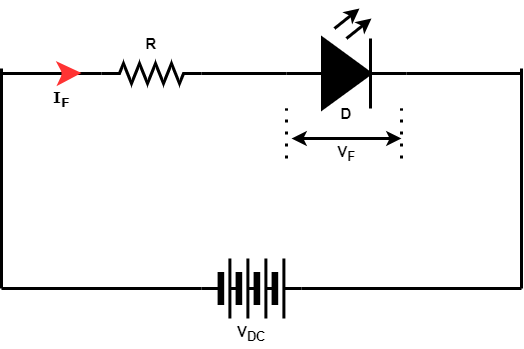A Ballast resistor is a type of resistor used in an electric circuit to limit the current. In electrical and electronic systems, the ballast resistor limits the fault current.
The primary function of this resistor is to maintain the electric current within the rated current of the device.
What is a Ballast Resistor?
A ballast resistor is a passive circuit element that is used in electrical and electronic circuits to reduce the amount of electric current within the circuit.
In an electrical system, this resistor helps to limit the current caused due to over-current flow. By maintaining the electric current at a fixed value or within a certain limit, the resistor ensures the stability of the circuit.
To perform the function, the ballast resistor changes its resistance value with a change in the electric current flowing through it. It typically has a specific threshold value of the current. When the circuit current exceeds this threshold value, its resistance increases. Similarly, when the circuit current goes below the threshold current, its resistance decreases. This is how the ballast resistor maintains a constant current within a circuit by changing its resistance value.
How a Ballast Resistor is Different from a Load Resistor?
The ballast resistor is different from a load resistor. It is because it has the characteristic to change its resistance value according to the change in the circuit current to maintain the current value within the circuit at a constant level.
On the other hand, a load resistor is usually a type of resistor that has a constant resistance value that cannot change with any change in the current or voltage in the circuit.
Overall, a ballast resistor is simply a variable resistor whose resistance is a function of the current flowing through it. Whereas, a load resistor is considered a constant resistor whose resistance value remains constant for different values of current and voltage.
Working of Ballast Resistor
The term ‘ballast’ represents stability. Therefore, the ballast resistor works by maintaining the stability of the circuit. The ballast resistor has a variable resistance which regulates the amount of current flowing in the circuit.
The current through the circuit when increases beyond a certain value, called threshold value, the resistance of this resistor increases and reduces the current in the circuit. When the circuit current decreases, the resistance of the ballast resistor decreases. Therefore, the ballast resistor changes its resistance to regulate the electric current and hence maintains the stability of the circuit.
Types of Ballast Resistors
They are classified into two types.
(1). Fixed Ballast Resistor
This type of resistor has a fixed or constant resistance value, and they are commonly used in circuits that require high resistance values and have loads of low power ratings. Some common applications of fixed ballast resistors are LED lamps, neon lamps, fan speed regulators, etc.
(2). Self-Variable Ballast Resistor:
A self-variable ballast resistor has a variable resistance that changes in response to variation in the current flowing through it. Therefore, an increasing current increases the resistance of the resistor and the decreasing current reduces the resistance of the resistor.
This automatically changing resistance of the ballast resistance helps to maintain the constant current and hence the stability of the circuit. A common example of a self-variable ballast resistor is the filament of an incandescent lamp.
How to Test a Ballast Resistor?
A ballast resistor can be tested by using a multimeter or an ohmmeter. Testing of the resistor involves the measurement of voltage across the load. If the resistor is in healthy condition, it minimizes the voltage level as per its specification. If the resistor is damaged, the voltage measured across the load will be higher than the normal value.
Another way to test this resistor is by measuring its resistance value by using an ohmmeter. If the measured resistance value is nearly equal to the rated value, then the ballast resistor is in good condition, otherwise, it is damaged.
Applications of Ballast Resistor
Application in Automotive Circuit
An ignition ballast resistor is used in the ignition system of automobiles. It is mounted between the primary source of the ignition coil and the soil stud.
The coil draws a large current when switching on ignition, the resistor reduces the coil voltage and thus limits the current during ignition. Thus, the resistor limits the current and reduces the temperature rise, leading life enhancement of the ignition coil.
At the start, the ignition system needs a voltage equal to the power source voltage. The jumper wire connected with an ignition ballast provides the required voltage to the ignition coil.
Applications in LED Circuit
The LED (Light Emitting Diode) is inclined to fail if the voltage applied to it is more than the rated voltage.
The ballast resistor is connected in the series with the LED. The resistor causes a voltage drop across it and thus it reduces the voltage across the LED to its rated value. The circuit diagram of the LED circuit is given below.

Here, the resistor R is connected in the series with the LED. The supply voltage VDC is higher than the LED’s rated voltage. If we directly connect the LED to the source, the LED will fail because LED can not sustain voltage more than its rated voltage. Therefore, a resistor connected in the series will cause a voltage drop across it and the LED gets the rated voltage for its operation.
The value of the resistor can be calculated using the following formula.

For example, if the value of the DC source is 6 V and the forward rated voltage and the forward current of LED are 2.5 volts and 10 mA respectively. Then, the value of the resistor is;

Advantages
The following are some important advantages.
- They regulate the voltage or current in a circuit to make it within a specified range.
- Improves the stability of the circuit by maintaining the circuit current at a constant value.
- They protect circuits against overcurrent damages.